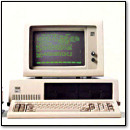[ Retro Scan of the Week ] The Nintendo Smartwatch
Monday, September 15th, 2014 Why not put LZDN1WBF and LSMN1WBF on your Xmas wishlist?
Why not put LZDN1WBF and LSMN1WBF on your Xmas wishlist?
As you probably know, Apple recently introduced the Apple Watch. That got me thinking about other nerdy watches of yore, and I remembered something I recently found in my mom’s attic.
Last month, my mother and I searched through boxes and boxes of my grandmother’s old dishes to see what might be of use to me now. The dishes had been sitting in my parents’ attic untouched for two decades. Many of them were padded with old newspaper from eastern Tennessee, which is where my grandmother lived until she died in 1992.
Among the usual black-ink-on-yellowing-paper fare, I found a handful of gloriously full-color advertisement circulars. A December 1989 mini-catalog for Service Merchandise caught my attention immediately because it featured a pair of Nelsonic Game Watches licensed by Nintendo. (That segment of the circular is what you see scanned above.)
Each of these two watches, which sold for ($19.97 a piece — or $38.37 today when adjusted for inflation) played a simplified prefab-LCD interpretation of its console namesake. If you remember Tiger’s LCD handheld games, you’re on the right track. In the Zelda watch game, you were forever trapped in a dungeon, and in Super Mario Bros. you forever hopped between platforms.
While these watch games were limited at the time, it was amazing to think you could fit a portable, battery-powered “video game” on your wrist and play it wherever you liked. I personally recall seeing more than one of these watches getting confiscated by teachers during my elementary school days.
That desire to carry functional video games with us has never abated. Heck, I bet that within days of the Apple Watch’s release next year, someone will hack it to play emulated versions of Super Mario Bros. and The Legend of Zelda — allowing us to finally have the full NES experience on our wrists. It may be 25 years too late, but it will be amusing to see how things have come full circle.
Discussion Topic of the Week: Have you ever owned a watch that played a game? Tell us about it.














